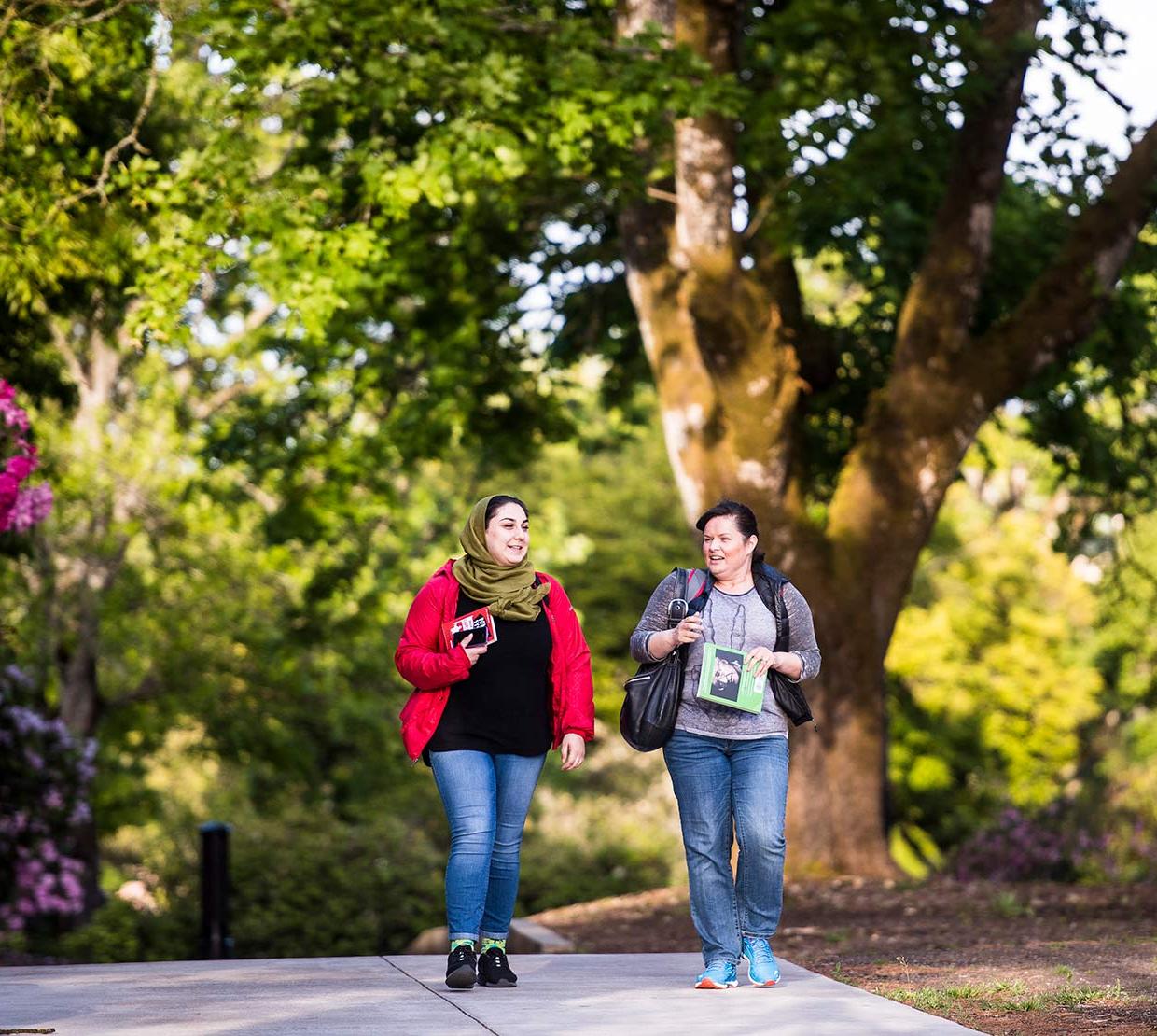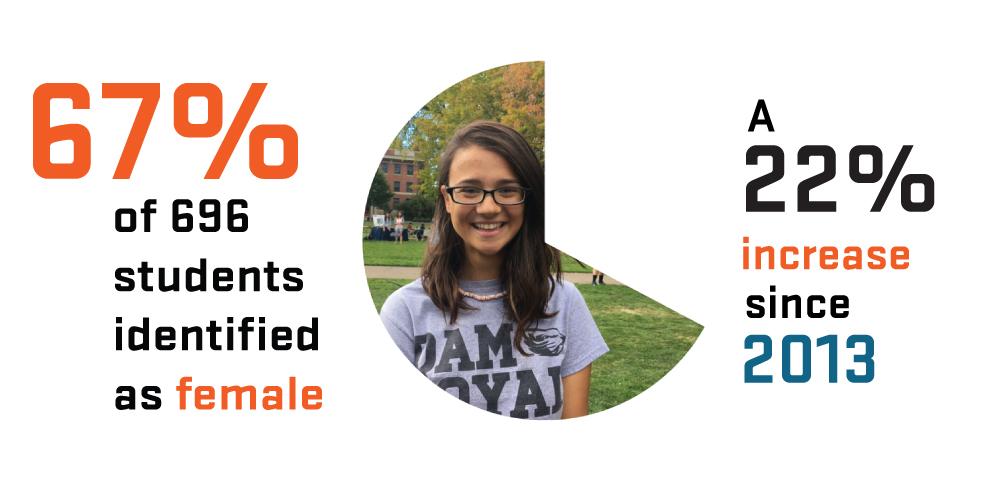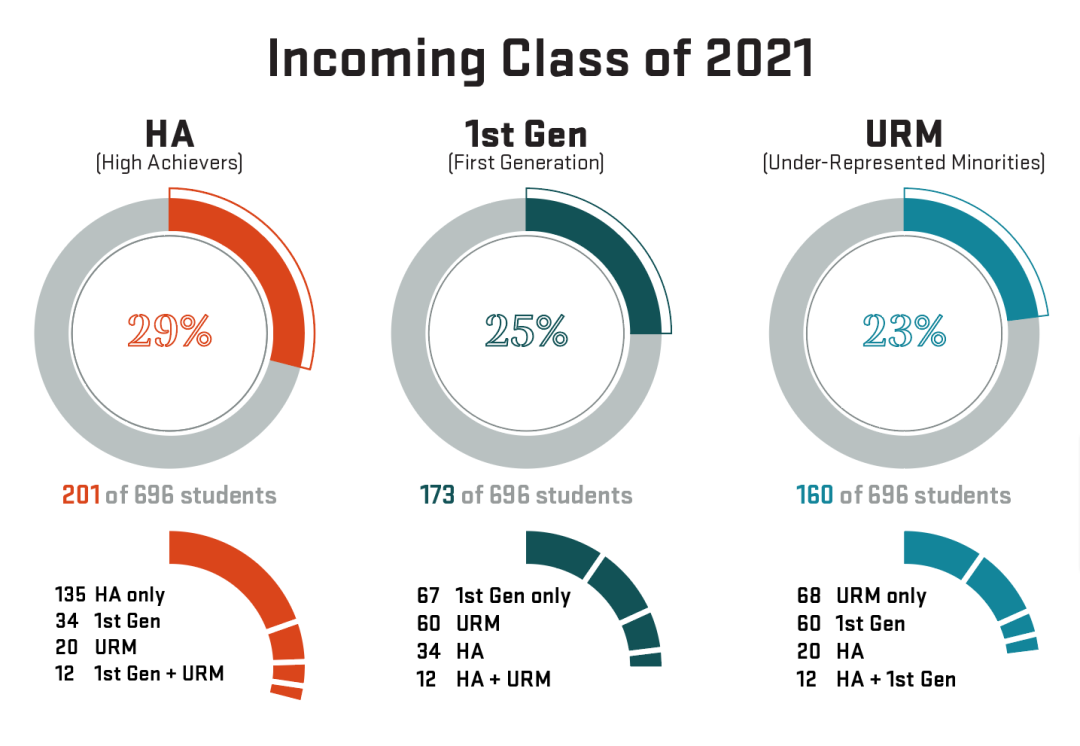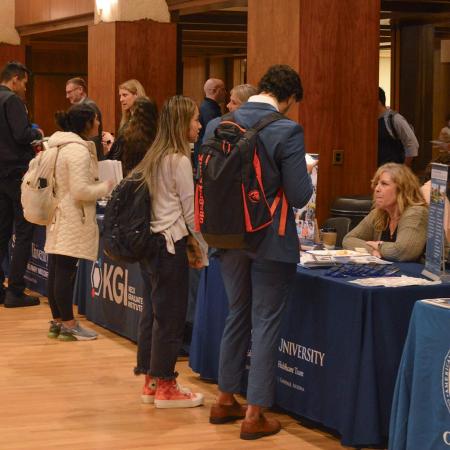In recent years, the College of Science has enhanced support for underrepresented minority students and first-generation students and increased enrollment of high achieving students (with a GPA of 3.5 and higher). The demographics of the class of 2021 show impressive gains in all these areas.
This fall, the College welcomed 696 new students, a huge increase of 31 percent from last year's incoming class. Twenty-five percent, or 173 first-year students, indicated they are first in their family to attend college and 23 percent are underrepresented minorities. The College is thrilled to welcome the highest ever number of high achieving students in its incoming class: 37.6 percent!
More than half of first-year science students, or 570, receive scholarship support. While this financial support has no doubt helped to attract and inspire top science students, the numerous opportunities and support for undergraduate research in labs across and beyond OSU have also attracted many talented students to the College.
Students sometimes start conducting research in their first year of college itself, supported by awards such as the SURE Science scholarship program. The latter offers students financial support for summer research across campus that can foster meaningful, scholarly connections early in their academic careers and help define their professional career path.
The increase in student diversity points to the strength of campus-wide science, technology, engineering and mathematics (STEM) programs such as LSAMP (Louis Stokes Alliance for Minority Participation), OSU STEM Leaders and SACNAS (Society for the Advancement of Chicanos/Hispanics and Native Americans in Science), which help to connect and fuel students interest in science through workshops, peer mentoring and research experiences helping them succeed both on campus and in their future professions.
"I am delighted to welcome the class of 2021 to the College of Science at OSU. I hope they take every opportunity to expand their professional and intellectual horizons in science. Our faculty and advisors are dedicated to student success," said Roy Haggerty, dean of the College of Science.
Overall fall term 2017 enrollment at OSU (which includes the main Corvallis campus, Ecampus and OSU-Cascades in Bend) grew 1.9 percent from last year, while enrollment at OSU's main campus in Corvallis continued to be stable. University-wide the number of high-achieving, minority and first-generation students have also risen in varying numbers. The most impressive enrollment figure is a 6.3 percent increase in minority students over a year ago.
A look at demographics: Women rule
The majority of the 696 students in the class of 2021—67%—identified as female, which constitutes the highest number of first-year women students in science since 2013. At 467, the total number of new women students this year constitutes a 51.6 percent increase over fall 2016.





